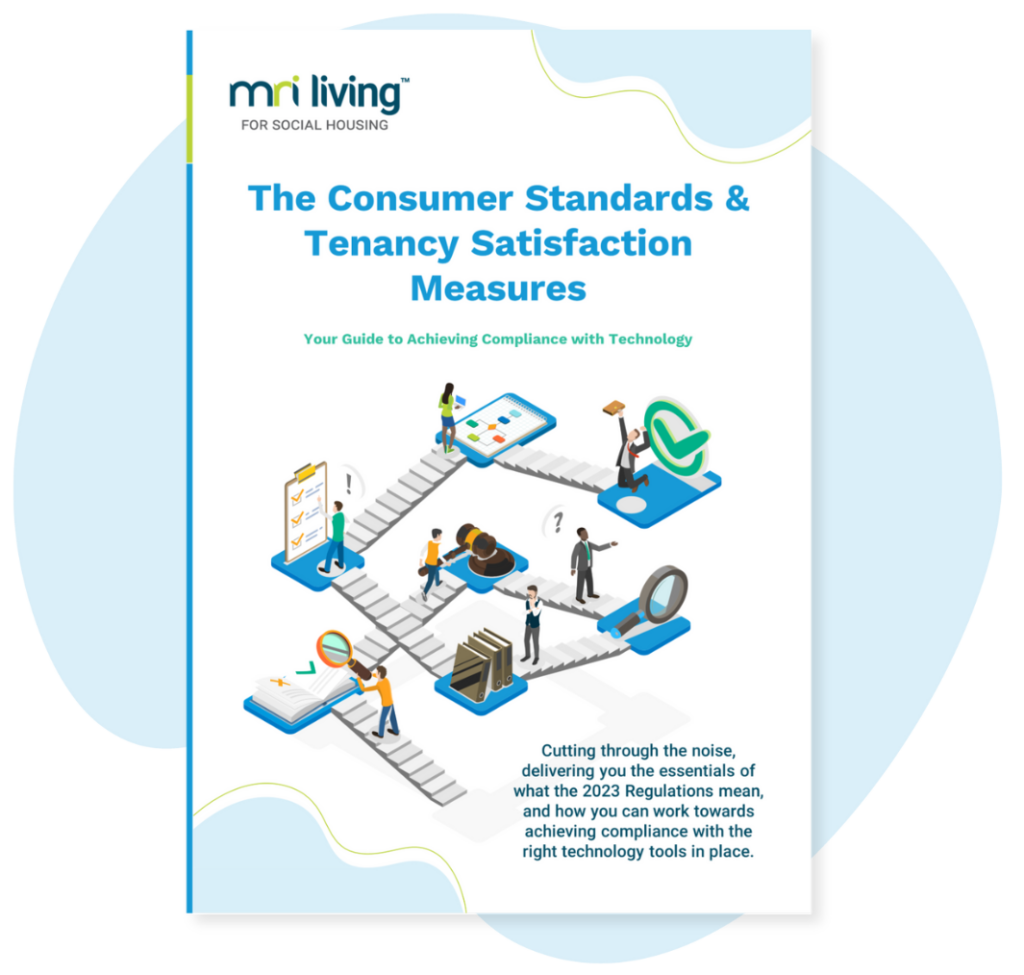Food poverty: the role of technology in finding a solution
Across the UK, 9-10% of the population are experiencing moderate to severe food insecurity and over the past five years the need for food banks has risen by 128%. The pandemic has exacerbated these problems and expected changes are predicted to have negative effects in the coming months. A concerted effort will be needed from multiple organisations to prevent the escalation of these issues and we believe technology can support this process, making it easier to identify the most vulnerable in our communities.
In the Resident Voice Index™ Neighbourhoods & Communities survey, social housing residents were asked about the facilities and amenities they had within a 15-minute journey of their home, in accordance with the ’15-Minute City’ urban planning approach. They were also asked how important these factors were. Overall, the survey found that amenities and services related to health and wellbeing were the most important for residents to have in their communities and generally speaking, that respondents were well provisioned for.
There was only one circumstance where this was notably different; ‘access to healthy and affordable food’, which ranked third in importance but only seventh for prevalence. This suggests that there could be a gap between how able people are to access healthy, affordable food and their need for it.
The impact of food insecurity
The cost of food is rising, the Universal Credit cut is looming and a ‘Cost of Living Crisis’ has been named recently by the press. The sector can reasonably predict these issues to be one of the main threats to sustainable rents and tenancies facing social housing providers this winter. Equipped with the right data and technology however, providers can pinpoint residents in need of additional support and services. There is a strong connection between housing stability and food access, placing housing providers at the centre of the ongoing maelstrom.
People on low incomes spend more of their income compared to the average on essentials – food, utilities, rent, bus fares and so on. When they are swept into deeper poverty they have to cut back: the food budget is often one of the few areas of spending that gives that option.
Joseph Rowntree Foundation, 2019
The Joseph Rowntree Foundation’s UK Poverty Report for 2020-2021 found that 37% of the social housing residents they polled had experienced a reduction in their income since the beginning of the pandemic and had subsequently reduced their expenditure on food. Worryingly, 8% of those with children reported actively cutting back on food for them. The link between housing providers and the right to food is not lost on the sector; take HQN’s Alistair McIntosh for example, sharing a picture of the food bank that was operating across the road from this year’s CIH annual conference.
The role of housing providers
Housing providers have been giving support across the country to alleviate the worst impacts of food poverty, food deserts and food instability in communities – especially in reaction to the pandemic. One of the most impactful answers given in the Resident Voice Index™ Neighbourhoods & Communities survey was a resident talking about the positive contributions made by their housing provider in the community. The respondent said that it was the, “Local community food shop that is trying to help eradicate food poverty for families forced into the Universal Credit shambles.”
An estimated 2.5 million children in the UK live in food insecure homes. Responding to statistics such as this, some providers have set up emergency food boxes for households in need, with others creating ‘lunch clubs’ with heavily subsidised meals to ensure people have at least one warm, substantial meal per day. Meanwhile, Hafod Housing in Cardiff are running their Food and Fun programme, the aim of which is to ensure primary school age children do not go hungry during the school holidays.
Social landlords are becoming involved because food poverty is on the rise and impacting their tenants.
Thinking to the future, providers building new homes are also pre-planning what constitutes a thriving, healthy, neighbourhood. Catalyst Housing’s, St Ann’s New Neighbourhood for example, makes residents’ health central to their proposed plans, that include on-site allotments for residents and spaces for farmers markets. This project has adopted a multi-partner approach, recognising that housing providers cannot address this problem alone.
The role of technology
Another one of the threats to household sustainability over the coming months are the expected rises in energy prices, which will disproportionately affect those on low incomes, especially those hit by the cut to Universal Credit. It’s realistic to predict that these compound circumstances will drive more people into fuel poverty and possibly rent arrears.
Someone who paid £80 per month for their energy just lost £80 per month in Universal Credit. Meanwhile, their bill’s gone up £20 due to price cap increase and gas prices. That person has gone from barely coping to £100 a month in debt in a split second.
Fraser Stewart, Strathclyde University
Fuel poverty is intertwined with food poverty; we know from the government that households experiencing fuel poverty often cut down on food expenditure in order to heat their homes. The use of data and technology by housing providers could be one of the tools in the box that teams have to identify and assist any of their residents who could be at risk of food poverty.
Data points that could be indicators that a household is in need of extra assistance might include those that have children (looking particularly at how parents might not cope during the school holidays when costs rise). Other factors could be whether they are accessing free school meals, are Universal Credit applicants, are at risk of fuel poverty, or are having trouble with rental payments and arrears.
Tracking these data points can trigger a welfare call at just the right time. Drawing from the concept of the ’15-minute city’, there are other data sets available that could assist housing providers in addressing food insecurity amongst their residents. For example, Trust For London’s ‘E-Food Desert Index,’ which identifies food deserts in the capital.
Housing providers using MRI Tenancy Analytics can identify pre-emptively the households that may be at risk of fuel poverty or financial hardship by cross-referencing the data points mentioned above. Using this solution, teams can spot red flags and begin conversations early to put suitable support in place and sustain tenancies.
Hafod Housing use Tenancy Analytics to ensure that sustainability remains at the heart of their tenancy approach. Richard McQuillan, Head of Housing Services at Hafod Housing explains how this works in practice: “We’ve already had a couple of cases where we’ve used Tenancy Analytics to check on tenants claiming to have no financial issues but who in reality, were in financial distress. Tenancy Analytics allowed us to quickly access the correct information which meant we were able to reassure them that they wouldn’t lose their tenancies and we were able to help them to rectify the situation. Early intervention really is key in these situations.”
Tenancy Analytics and the data it generates means the company can wrap the right services around individuals at the right time.
Serena Jones, Director of Homes, Communities and Services, Coastal Housing Group
This winter is going to be especially challenging to many in the UK and housing providers will be faced with huge challenges to address a crisis that needs multi-agency approaches to solve. Central and local government will be at the core of the response, as evidenced by a recent council vote in Coventry that enshrined the ‘Right to Food’. For housing providers, as much timely insight as possible into the lives of the people in their homes could be the difference between households needing to make the choice between decent food and paying rent.
The Consumer Standards and Tenancy Satisfaction Measures: Your Guide to Achieving Compliance with Technology
Cutting through the noise, delivering you the essentials of what the Consumer Standards and Tenancy Satisfaction Measures 2023 Regulations mean, and how you can work towards achieving compliance with the right technology tools in place. New regulatio…

